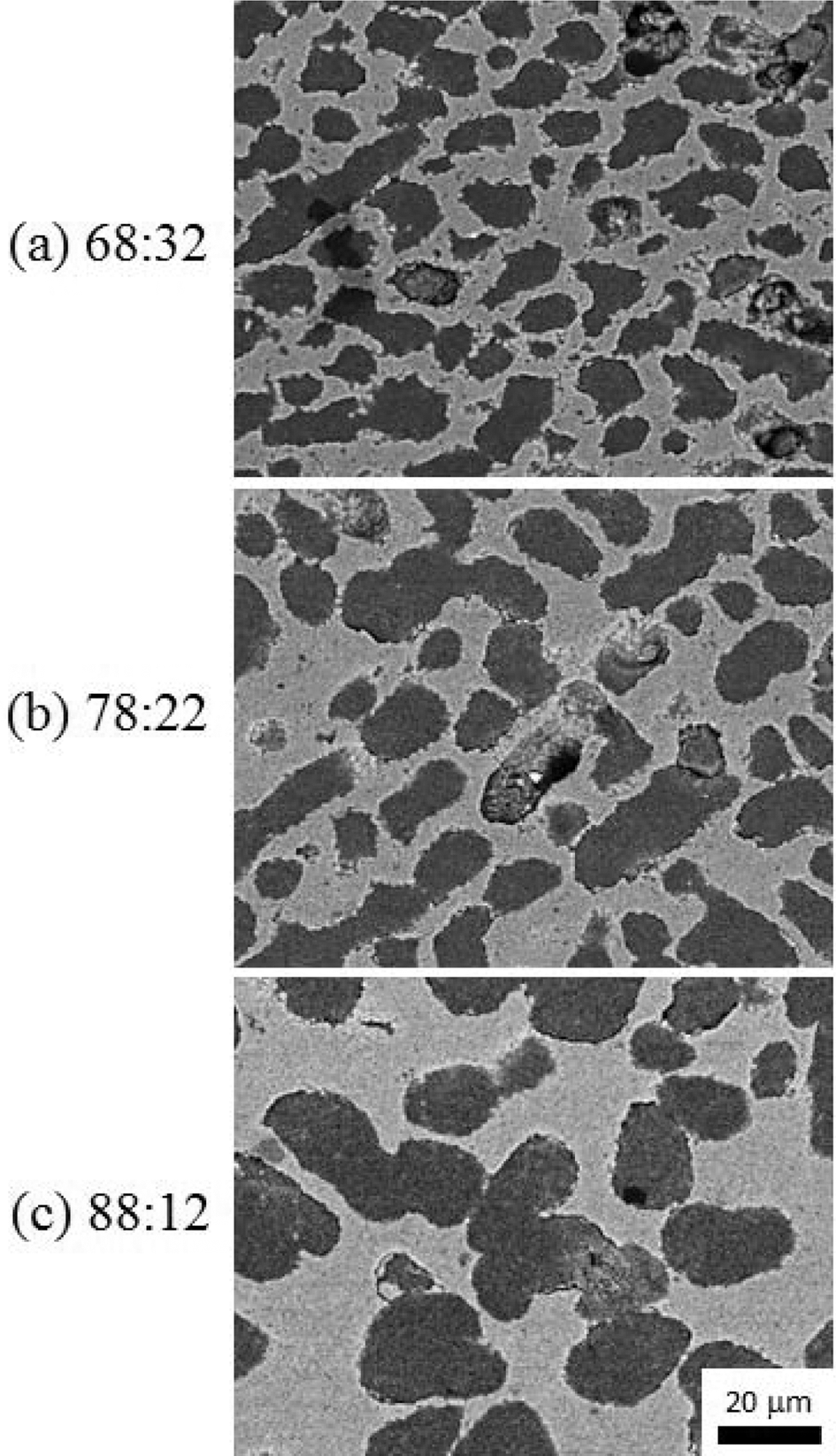- [Korean]
- Interfacial Reaction between Spark Plasma Sintered High-entropy Alloys and Cast Aluminum
-
Min-Sang Kim, Hansol Son, Cha Hee Jung, Juyeon Han, Jung Joon Kim, Young-Do Kim, Hyunjoo Choi, Se Hoon Kim
-
J Powder Mater. 2022;29(3):213-218. Published online June 1, 2022
-
DOI: https://doi.org/10.4150/KPMI.2022.29.3.213
-
-
649
View
-
4
Download
-
1
Citations
-
 Abstract Abstract
 PDF PDF
This study investigates the interfacial reaction between powder-metallurgy high-entropy alloys (HEAs) and cast aluminum. HEA pellets are produced by the spark plasma sintering of Al0.5CoCrCu0.5FeNi HEA powder. These sintered pellets are then placed in molten Al, and the phases formed at the interface between the HEA pellets and cast Al are analyzed. First, Kirkendall voids are observed due to the difference in the diffusion rates between the liquid Al and solid HEA phases. In addition, although Co, Fe, and Ni atoms, which have low mixing enthalpies with Al, diffuse toward Al, Cu atoms, which have a high mixing enthalpy with Al, tend to form Al–Cu intermetallic compounds. These results provide guidelines for designing Al matrix composites containing high-entropy phases. -
Citations
Citations to this article as recorded by  - Simultaneous enhancement of strength and ductility of Al matrix composites enabled by submicron-sized high-entropy alloy phases
Chahee Jung, Seungin Nam, Hansol Son, Juyeon Han, Jaewon Jeong, Hyokyung Sung, Hyoung Seop Kim, Seok Su Sohn, Hyunjoo Choi
Journal of Materials Research and Technology.2024; 33: 1470. CrossRef
- [Korean]
- Fabrication of Porous Al2O3 Film by Freeze Tape Casting
-
Ran-Hee Shin, Jun-Mo Koo, Young-Do Kim, Yoon-Soo Han
-
J Korean Powder Metall Inst. 2015;22(6):438-442. Published online December 1, 2015
-
DOI: https://doi.org/10.4150/KPMI.2015.22.6.438
-
-
 Abstract Abstract
 PDF PDF
Porous thick film of alumina which is fabricated by freeze tape casting using a camphene-camphor-acrylate vehicle. Alumina slurry is mixed above the melting point of the camphene-camphor solvent. Upon cooling, the camphene-camphor crystallizes from the solution as particle-free dendrites, with the Al2O3 powder and acrylate liquid in the interdendritic spaces. Subsequently, the acrylate liquid is solidified by photopolymerization to offer mechanical properties for handling. The microstructure of the porous alumina film is characterized for systems with different cooling rate around the melting temperature of camphor-camphene. The structure of the dendritic porosity is compared as a function of ratio of camphene-camphor solvent and acrylate content, and Al2O3 powder volume fraction in acrylate in terms of the dendrite arm width.
- [Korean]
- Aging Characteristics of 7xxx Series Al Composites with Al2O3
-
Kyung-Ho Min, Kwang-Hyun Park, Young-Ik Seo, Si-Young Chang, Young-Do Kim
-
J Korean Powder Metall Inst. 2006;13(3):172-177.
-
DOI: https://doi.org/10.4150/KPMI.2006.13.3.172
-
-
 Abstract Abstract
 PDF PDF
- Aging characteristics and mechanical properties of commercial 7xxx series Al composites were investigated from viewpoint of ceramic contents. After sintering process, sintered densities of blended and composite powder were 95 and 97%, respectively. Each part was solution-treated at 475°C for 60 min and aged 175°C. And two-step aging was also performed form 120°C to 175°C. The aging behavior of the sintered composite pow-der was different from that of sintered blended powder. The peak aging time of the composite was rapid as well due to strain. Before aging, mechanical properties of sintered composite powder was significantly higher than that of sintered blended powder. These increments of properties were directly affected by ceramic particles. However, after aging, incremental rate of mechanical properties was slowed in the composite.
|





